Stone and the stone-thrower remained unchanged as the response jumped from bamboo shield-tear smoke mix to pellet- PAVA combine. It was consistently asserted that pellets are a non-lethal weapon but Saima Bhat profiles 14 youth including minors who were killed by this weapon in last 100 days
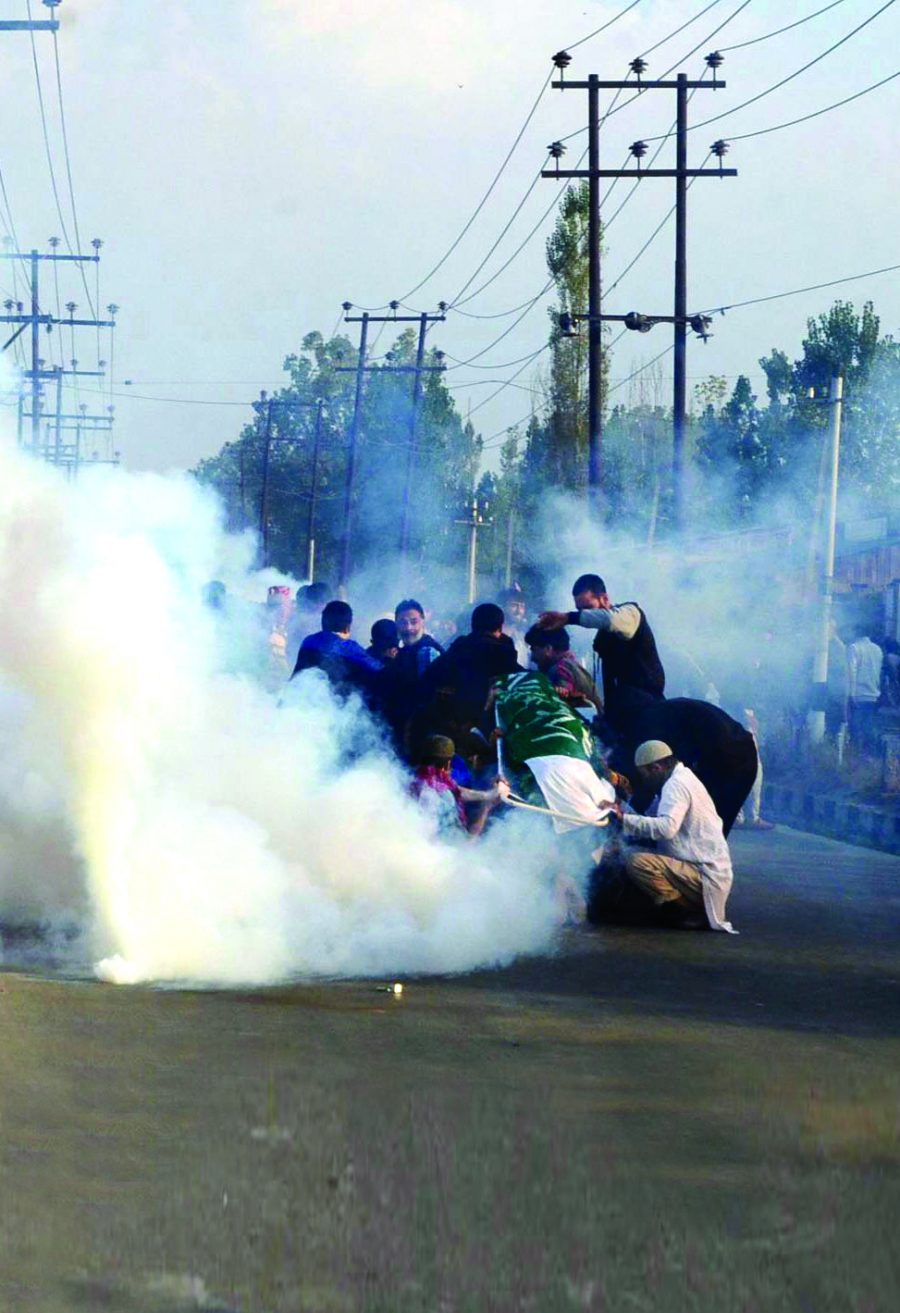

Pellets being fired from the shotguns are the new debate, this season. Termed ‘non-lethal’, this gun has not only blinded people and maimed hundreds, but has led to not less than fourteen deaths in last 100 days.
The last victim was Junaid Ahmad Akhoon, 12, a class 7th student, who was hit by pellets in his chest and head at his home in Saidapora Eidgah. His killing was condemned by all, by unionists and separatist. Unionists joined separatists in condemning his killing.Perhaps that was the reason why the PDP demanded a probe into this particular killing from the government that it runs with the BJP.
Akhoon’s family alleged the slain youth, a student of New Bonivant English School (Roll No 29), was at home when government forces entered their house and showered pellets on him.But the state police says he was part of anti-India protests on Friday. When he was rushed to SKIMS he was half-dead. By around 3 am, he died and his relatives resorted to protests to get the corpse, which was eventually handed over to them at 6 am. Three hours later when he was being taken for burial, police charged again and the mourners were tear-gassed. Incidentally, the locality wanted him to bury in Eidgah but his mother insisted he be laid to rest within the courtyard!
Incidentally, the boy who fell victim to pellets before him was also a seventh standard student. Nasir Shafi Qazi, 11, received a volley of pellets
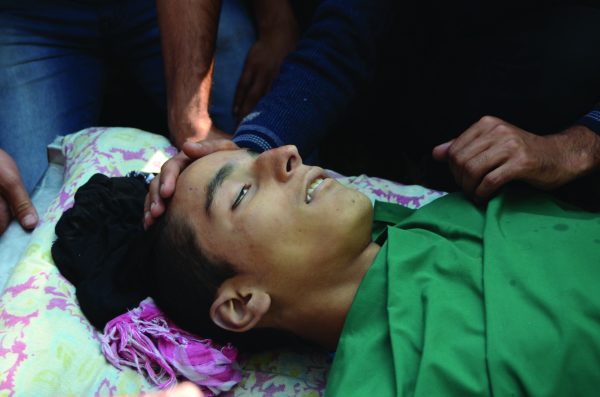
“mysteriously”. He was ‘missing’ when locals found his body, near a stream at Dachigam national park, his body and sweatshirt bore pellet marks with fresh blood stains.
Qazi, a resident of Theed Harwan and a student of Green Light Secondary School, was reported to have gone missing after protests on Friday evening. Same evening locals gathered and decided to look for him. But the search turned into mourning when they found his body nearby the stream. “His right arm was broken and there were around 400 pellets in his body,” said his father, Mohammad Shafi Qazi. “There were torture marks on his body and some of his hair had been pulled out.”
That Friday, the entire Harwan belt witnessed protests and instances of stone pelting too. Cops had chased protesting youth, many of whom ran towards Dachigam park. But seeing some policemen already there, they ran in different directions. “I climbed a tree when an officer told his cops to arrest all of us. Five policemen moved towards Nasir and fired pellets. The cops returned but Nasir did not. I thought he had escaped. After some time, I climbed down from the tree and went home. Then I came to know that Nasir had not reached home,” one witness who was part of that protest told reporters.
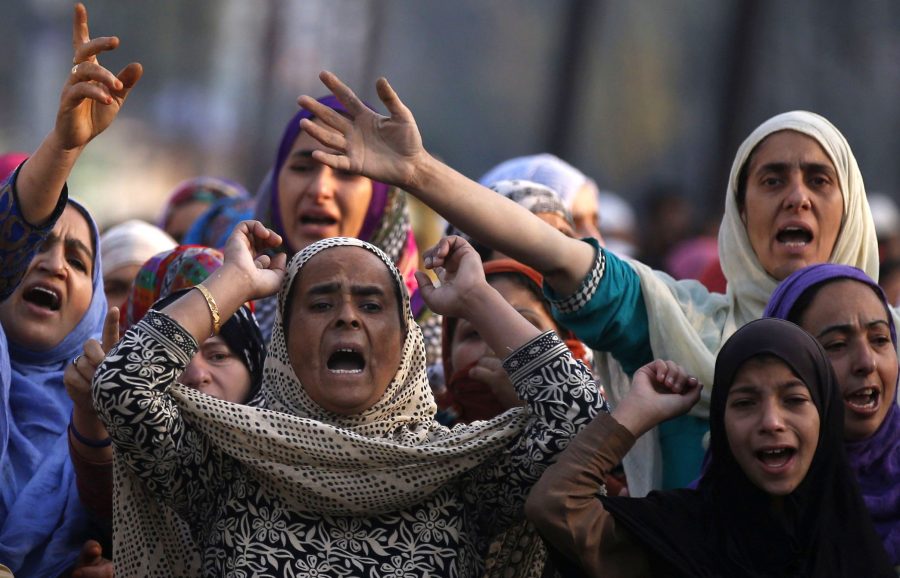
On July 9, a youth aged 20 was brought to SMHS hospital with severe pellet injuries in his head with his “brain shattered” by the pellets.
The victim, according to a doctor, was seen vide Card No. 40248 but his name was not recorded as he was brought to the hospital by a group of people who did not know him.
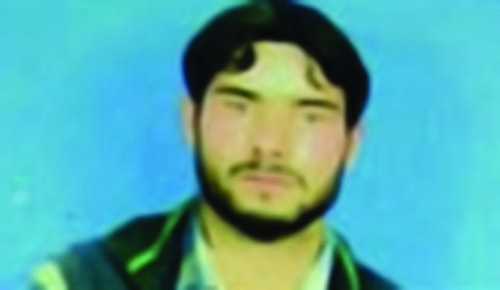
On July 10, Altaf Ahmed, 25, from Rajpora Pulwama died at SMHS Hospital after he had received multiple pellet injuries in his chest. Doctors treating him in the hospital said that he had cardiac tamponade, fluid in the sac in which heart is enclosed. This condition was caused by the holes that pellets had made in his heart.
Reportedly Ahmad was injured when youth attacked a CRPF camp in Belou and in return they fired pellets, in which Ahmad was injured.
Same day, Shabir Ahmad Mir, 26, a mason by profession, was shot at his home in Tengpora Srinagar. Initially, his parents alleged that he was shot dead by a police officer but after an autopsy was carried out it was established that he had nearly 300 pellets in his body that killed him instantly. Most of these pellets, fired from a very close range, had entered the mason’s body through his back on the left side below the shoulder. Pellets were also found in his lungs and intestines.
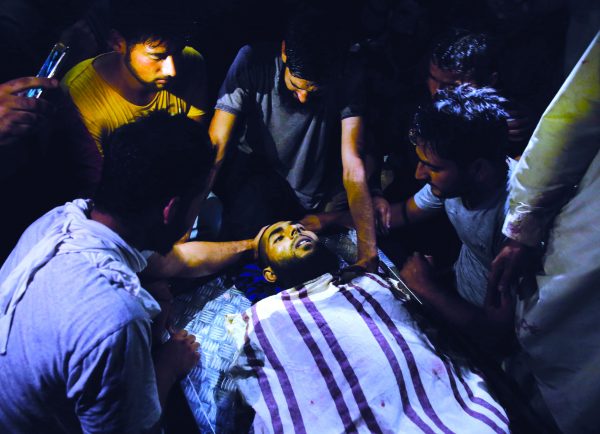
Barely two kilometres away in Chattabal, a youth, Riyaz Ahmed Shah, 23, an ATM guard, was found dead on August 03. Initially the case was reported as a routine road traffic (RT) accident. But locals refused to bury the slain without an autopsy.
In his post mortem report, Shah had a single perforation in abdomen, much like a bullet wound. He was fired with a pellet gun from a close proximity. Around 300 pellets were found inside his body. Pellets had destroyed his left kidney and then they had dispersed inside the body causing injuries to liver, spleen, intestines and lungs. The wide disbursal of pellets had caused his instant death.
Shah’s brother, Shakeel Ahmad was quoted saying that he had gone to inspect an ATM machine in the area in the evening when curfew was relaxed. “I called my brother at 10 pm Tuesday night and asked him when he will reach home; he said he was on the way. After 20 minutes, I called him again and he said he was a few minutes away. When he did not return, I called him around 10.30 pm, but this time he didn’t pick up.” Then around 11.30 he received a phone call from an unknown number asking him to reach SMHS Hospital where he found his brother dead.

Shakeel claimed that an auto driver had seen his brother lying on the road near his two-wheeler, close to the CRPF bunker. The auto driver did not stop, but informed volunteers at SMHS hospital. “I was told by people that my brother was lying close to his scooty and CRPF men were watching him. He had already died when volunteers took him to the hospital,” Shakeel alleged.
Now police has registered a case under section 302 RPC (murder) against ‘unknown security force personnel’ and has started investigation into the case as there were no reports of any clashes during that night. This was despite the fact that there was clear reportage available about which unit of CRPF was responsible for the cold blooded murder.
After four days, on August 08, Amir Bashir Lone, 17, from Sedow Shopian, succumbed to his injuries at SKIMS Soura after battling for his life for three days.
At SKIMS, Lone was lying unconscious in Intensive Care Unit. Doctors had said his brain was badly damaged by pellets, some claim he had teargas shell injuries as well. Lone was injured when locals pelted stones on Army camp in Chowdrigund. In return state police reached on spot and fired pellets and teargas shells.
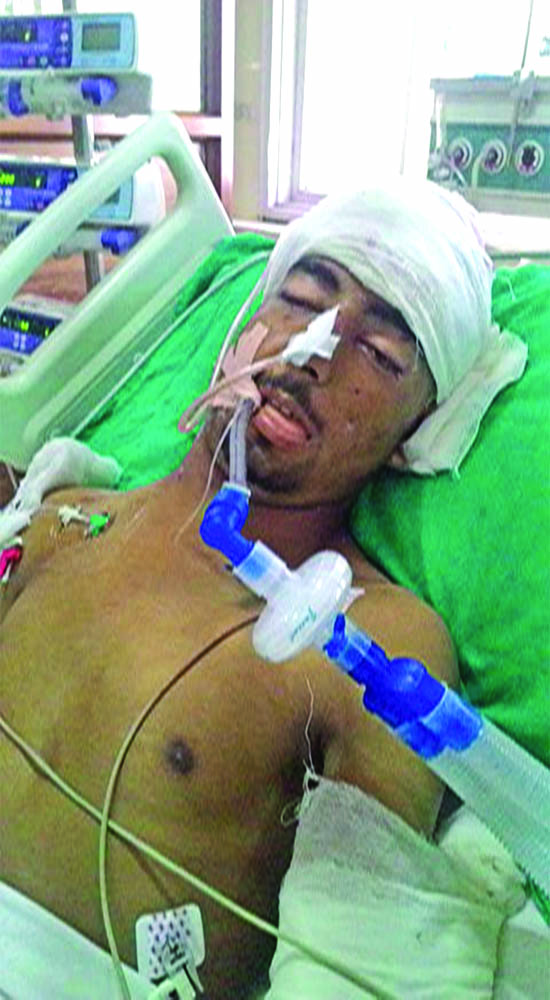
Initially Lone’s identity couldn’t get verified as he was not carrying any identity card and he was taken to the district hospital by local SP Shalendar Mishra. From district hospital, two volunteers accompanied him to the SMHS hospital in Srinagar. During midnight one decided to leave back to his home in Shopian, and in morning he received a call from a doctor in PHC Sedow, who asked him to share the picture of injured youth. Till then Lone’s family didn’t know that their son was battling for life.
Lone was working on day basis at a local iron shop as a welder. He is survived by his father, a labourer who is not able to speak properly, mother and two teenage siblings.
One year elder to Amir, a student Ishfaq Ahmad, 18, too suffered critical pellet injuries at Badipora Tangmarg on August 15. According to doctors the pellets had “severely damaged his brain.” Son of a daily wager Abdul Ahad, Ishfaq was grievously injured after being hit on head by pellets which has perforated into his skull. Circumstances in which Ishfaq was injured were not immediately known.
Another youth, a class 12th student Amir Gul Mir, 19, from Pulwama district, was also hit by pellets. He succumbed to his injuries on August 24. When he reached at SMHS hospital, doctors had said he had no pulse at the time he was received at the Trauma Theatre.
Mir had 40-50 pellets in his chest. He had a major intra-thoracic injury and pericardial effusion, which means pellets had punctured his heart and lungs; his airways were leaking; perhaps a major vessel was perforated too.
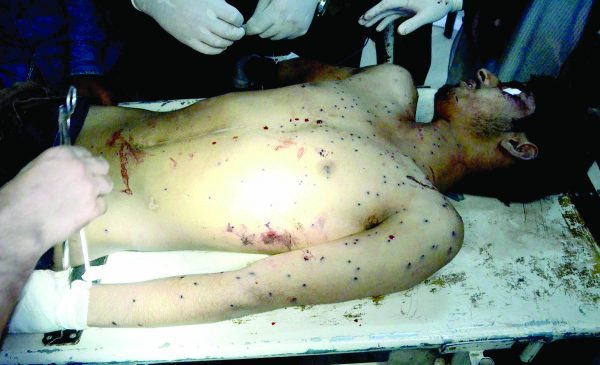
Mir’s relatives who brought him to Srinagar hospital were quoted saying that forces did not permit the injured to be moved to hospitals. “For over an hour, his friends tried to evacuate him. They (forces) sealed all routes,” his brother had said.
But Mir’s case was different than other pellet hit victims. This was the second time hewas hit. Earlier this year, he was hit by a tear gas shell in abdomen in Kakapora Pulwama, which cost him his spleen.But this time he was not lucky enough that he could survive. Mir died within three hours of Home Minister Rajnath Singh’s landing in Srinagar.
Another class twelfth, non medical student, Aasif alias Musaib Majeed Nagoo, 17, from Sonawani in Kupwara district, also died of pellets on September 05. Dozens of pellets had pierced his head. His brain matter was coming out when we he was admitted at SMHS hospital.
Nagoo was admitted in ICU for two days before he succumbed to fatal injuries. He had passed his class 10th examination with a distinction.
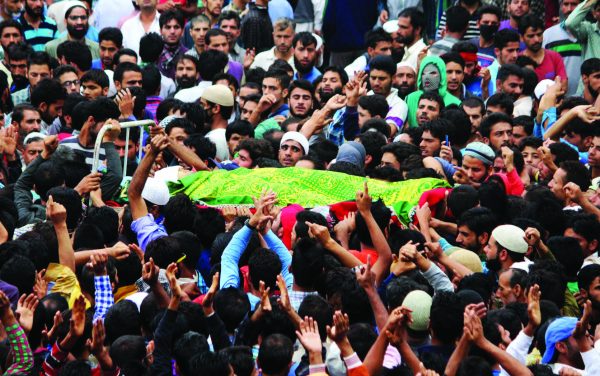
Next day, on September 6, J&K Government defended the use of pellet guns as “modern method to deal with crowd, particularly agitating mobs…” in the High Court.
“It is the constitutional and legal duty of the state to maintain law and order. As to what method is required to be given effect in order to control law and order has to be left to the state,” the government informed the Court. But same day another youth, a graduate Naseer Ahmad, 20, from Seer Hamdan Islamabad, too succumbed to his pellet injuries. The pellets had pierced his heart.
“Naseer had a zero degree pellet injury near his heart. That means he was shot from very close range,” a doctor was quoted saying.

Naseer was fired with pellets when the locals of his area were protesting against night raids by police to arrest the youth involved in protests and stone-pelting incidents.
The protesting youth had pelted stones on government forces but reportedly Ahmad was watching the protests from a distance, where he was injured.
Ahmad was brought dead to the local sub-district hospital, doctors said. His funeral was attacked with teargas shells leaving his parents and sisters only to shoulder his coffin.
Two days later, on September 08, Yawar Ahmad Dar, 23,of Botengoo, in Islamabad was also fired with pellets in his chest and abdomen. Locals alleged there were no protests in the area that day. But that day, police and CRPF first cleared the barricades put up by the locals to prevent night raids and then forced their way into the village. After chasing people, locals said they smashed window panes and also damaged electricity transformer.

When people were running for their safety, Dar was caught unaware and they ‘pumped pellets into his abdomen and chest from a very close range’. He was rushed to District Hospital Islamabad where doctors declared him brought dead. But doctors said the slain youth had multiple pellet injuries in his abdomen and chest.
As Dar’s body was taken for last rites, police and paramilitary men again fired pellets and lobbed shells injuring at least six mourners.
Another Shopian youth, BA 1st year student Shahid Ahmad Seh, 24, succumbed to his pellet injuries on September 13. That was the day of Eid. But Kashmir was curfewed because separatists had asked people to march towards the United Nations Office. There were no prayers in Jamia masjid and the Hazratbal shrine because government ensured there was no major gathering in Srinagar.
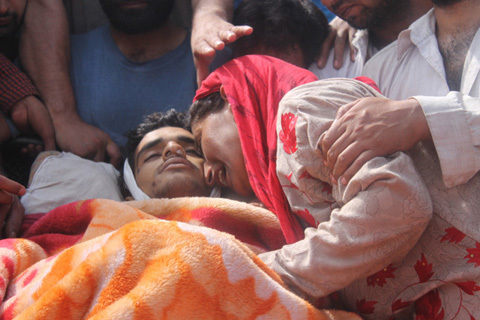
Seh, a resident of Nagbal village, had left his home to offer Eid prayers in a local children park in Shopian, which was out of curfew limits. But as soon as the prayer was over, clashes took place and in return pellets were showered on protesters. As the district hospital area was under curfew, locals took injured Seh on a bike to a Primary Health centre (PHC) Herman but when they reached there he was declared brought dead because he had lost a lot of blood while being driven on a bike.
On October 01, Muhammad Muzaffar Pandit, 22, from Check Kawoosa area of Budgam succumbed to his pellet injuries at SKIMS, Soura.
Aspiring to become a teacher Pandit had sustained pellet injuries on September 15, when clashes broke out in Kawoosa village after cops and CRPF allegedly barged into the area and resorted to indiscriminate pellet and teargas shelling, injuring dozens of protesters.
Pandit received pellet injures in his left eye and was first rushed toSDH Magam from wherehe was referred to SKIMS Medical College hospital

Bemina (JVC) and then to SMHS hospital. After undergoing two surgeries, he was discharged on September 30. But his condition deteriorated same night and was rushed to SKIMS Soura where he breathed his last. Doctors treating him were qouted saying that he had developed septicemia (severe infection).
Pandit, eldest in his family is survived by his parents, a brother and two sisters. His father Mohammad Ramzan Pandit, is working as an orderly in the education department. When his son was injured he had said, “I could not take him to the hospital as troopers from the nearby CRPF camp were arresting everyone.” It was next morning that senior Pandit could manage a vehicle to take him to JVC hospital.















